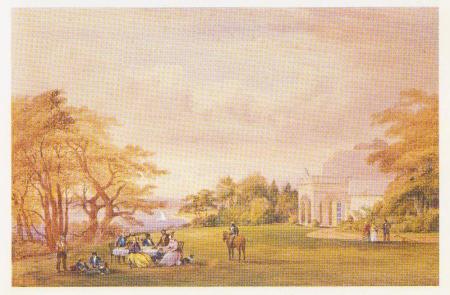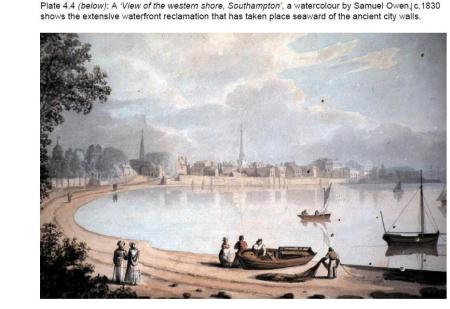David Hackett Fischer, 1989.
This is a fascinating account of four ideological and/or economic migrations to America in the 17th and 18th centuries and the ways the migrating communities took their own folkways with them, creating distinctive traits in different regions of America.
There’s a Wikipedia page on the book. There are extracts from the section about the emigration of people from the Scottish Borders and Northern Ireland to the “back country”, the Appalachian mountains, Maryland, Virgina and Carolina here. There’s another extract here (PDF) particularly about the environment of the regions to which the first three of the migrations Fischer discussed went. I like the image of some of the Puritans having “have had their overgrown beards so frozen together that they could not get their strong-water bottles into their mouths” (not sure what strong-water is – spirits?).
Here’s a list of criticisms of the book, including suggesting that he overstates his case and that sometimes he gives no sources or outdated sources (wch I had noticed). I’ve also found that quotes where I can find another source online sometimes differ from what appears to be the original text (“perswade” where he silently corrects to “persuade” in the ballad below, for instance, and “Nashun” in an account of a sampler where he corrects to “Nation”) and occasional minor inaccuracies (he says the Filmer family seat in Kent is now “a school for wayward girls” – in fact it hasn’t been since 1947, though it was still a school for boys at the time Fischer was writing; and see comments on the William Blundell quote below).
Fischer’s list of folkways is useful to bear in mind if you are creating imaginary societies:
Speech ways
Building ways
Family ways (both in ideal and in actuality)
Marriage ways (including courtship and divorce)
Gender ways (customs regulating social relations between men and women)
Sex ways (including the treatment of sexual deviance)
Child-rearing ways (again, in ideal and in actuality)
Naming ways (favoured forenames and the descent of names)
Age ways (attitudes towards age)
Death ways
Religious ways
Magic ways (beliefs and practices about the supernatural)
Learning ways (attitudes towards literacy and education)
Food ways (including patterns of eating and fasting)
Dress ways
Sport ways (including attitudes towards recreation and leisure)
Work ways
Time ways (attitudes towards time, the rhythms of life)
Wealth ways (attitudes towards wealth, wealth distribution)
Rank ways (rules by which rank is assigned, the roles it assigns, relations between ranks)
Social ways (conventional patterns of migration, settlement, association and affiliation)
Order ways (ways of ensuring order, forms of disorder)
Power ways (attitudes towards authority and power, patterns of political participation)
Freedom ways (ideas and customs about liberty and restraint)
Here’s part of a ballad about the Puritan migration to Massachusetts:
The Zealous Puritan
For Company I fear not,
There goes my Cousin Hannah,
And Reuben so persuades to go
My Cousin Joyce, Susanna.
With Abigail and Faith,
And Ruth, no doubt, comes after;
And Sarah kind, will not stay behind;
My Cousin Constance Daughter.
(from An American Garland: Being a Collection of Ballads Relating to America, 1563-1759).
During this migration, “the cost of outfitting and moving a family of six across the ocean was reckoned ad £50 for the poorest accommodation, or £60 to £80 for those who wished a few minimal comforts. A typical English yeoman had an annual income of perhaps £40 to £60. A husbandman counted himself lucky to earn a gross income of £20 a year”.
In Puritan Massachusetts, “in nuclear families that were persistently “disorderly” – a word that covered a multitude of misdeeds – the selectmen were required to remove the children and servants and place them in other homes. Thus, in 1675, Robert Styles of Dorchester was presented for many sins, and ordered to “put forth his children, or otherwise the selectmen are hereby empowered to do it, according to law”. According to this site (wch has other good quotations about life in colonial families), his sins included “not attending the public worship of God, negligence in his calling, and not submitting to authority”.
In this society no-one was allowed to live alone. There were laws against it in Connecticut and Plymouth:
In 1668 the court of Middlesex County, Massachusetts, systematically searched its towns for single persons and placed them in families. In 1672 the Essex County Court noted:
Being informed that John Littleale of Haverill lay in a house by himself contrary to the law of the country, whereby he is subject to much sin and iniquity, which ordinarily are the companions and consequences of a solitary life, it was ordered…he remove and settle himself in some orderly family in the town, and be subject to the orderly rules of family government.
[He was] given six weeks to comply, on pain of being sent to “settle himself” in the House of Correction.
This custom was not invented in New England. It had long been practiced in East Anglia. From as early as 1562 to the mid-seventeenth century, The High Constables’ Sessions and Quarter Courts of Essex County in England had taken similar action against “single men,” “bachelors,” and “masterless men.”
Death customs in Puritan Massachusetts discouraged outward displays of grief, except for a weird custom following the funeral:
After the funeral, food and drink were served. Then suddenly the restraints were removed on one of the few occasions when New Englanders drank to excess. Entire communities became intoxicated. Even little children went reeling and staggering through the bleak burying grounds. There are descriptions of infants so intoxicated that they slipped into the yawning grave.
(This is one of the things he gives no source for.)
I like this print of Yale in 1807 he mentions, with the “students in beaver hats and swallow-tailed coats playing football on New Haven Common, while an elder … looked on with an air of disapproval”.
A ballad from the 17th century migration “of indentured servants and distressed cavaliers” to Virginia:
The Lads of Virginia
Come all you young fellows wherever you be,
Come listen awhile and I will tell thee,
Concerning the hardships that we undergo.
When we get lagg’d to Virginia. …
When I was apprentice in fair London town,
Many hours I served duly and truly,
Till buxom young lasses they led me astray.
My work I neglected more and more every day,
And to maintain them went on the highway.
By that I got lagg’d to Virginia. …
When I was in England I could live at my ease,
Rest my bones down on soft feathers,
With a jug in my hand and a lass on my knee,
I thought myself fit for all weathers.
But now in Virginia I lay like a hog,
Our pillow at night is a brick or a log,
We dress and undress like some other sea hog,
How hard is my fate in Virginia.
Old England, Old England, I shall never see you more.
If I do it’s ten thousand to twenty;
My bones are quite rotten, my feet are quite sore,
Fm parched with fever, and am at death’s door.
But if ever I live to see seven years more.
Then I’ll bid adieu to Virginia.
(Also from An American Garland.)
He writes “Gentlemen took pride in the firtility of their women and their animals – sometimes in the same breath. A seventeenth-century gentlement named William Blundell expressed delight in his ménage, when within 24 hours his wife was delivered of a son, his prize cow produced a calf, a sow dropped fifteen piglets, a bitch gave birth to sixteen puppies, a cat had four kittens, and his hen laid fifteen eggs”. He gives the sources as A Cavalier’s Notebook but in fact the actual text reads “in or about the year 1673 there happened in one family in Salford, within the space of twenty-four hours, these several births following, viz. : the wife of the house was delivered of a son, a cow of a calf, a sow of fifteen pigs, a bitch of sixteen whelps, a cat of four kittens, and a hen hatched fourteen eggs. All this I took in writing from Mr. Samuel Andrews, and he professed that he had it credibly affirmed to him by persons in the same neighbourhood”. Fischer implies that this relates to Virginia, but in fact this is an English source, isn’t about the author William Blundell’s family, and there are a couple of other minor discrepancies. Still a good story though – should be a nursery rhyme.
There’s a good list of North Midlands (Cheshire, Derbyshire, Lancashire and Yorkshire) vocabulary that travelled to America, including the following:
budge
cattawumpus
cuddle
dither (upset)
expect for suppose, as “I expect that’s so”
find (provide for)
flabbergasted
good grief
mad (angry)
quality folks (gentry)
shaggareen (untidy person)
sneezlepoak (hesitating person)
swatch (fabric sample)
thingamajif
upsa daisy
Thomas Budd’s proposal for education in Quaker schools in Pennsylvania, 1698: boys were to be “instructed in some mysetery or trade, as the making of mathematical instruments, joinery, turnery, the making of clocks and watches, weaving, shoemaking or any other useful trade”. Girls were to learn “spinning of flax and wool, and knitting of gloves and stocking, sewing, and making of all sorts of useful needlework, and the making of straw work, as hats, baskets, etc”. He also said “to the end that the children of the poor people, and the children of Indians, may have good learning with the children of the rich people, let them be maintained free of charge with their parents”. Penn himself wrote “I recommend the useful parts of mathematics, as building houses, or ships, measuring, surveying, dialing, navigation: but agriculture especially is my eye. Let my children be husbandmen and housewives”. But Fischer writes that there was little Quaker support of public education, and “on the subject of education, no public laws of any importance were passed in Pennsylvania from 1700 to 1776”. Not sure what “dialing” is.
On Quaker food, Fischer says that the migrants brought with them a method of food preservation through boiling. This included cream cheese (Philadelphia) wch was partly dehrydrated sour cream, apple cheese, plum cheese, pear cheese, walnut cheese (there are some recipes for this online but none of them seem to be about boiling), lemon cheese (can’t find a recipe for this except ones that look like lemon curd or are in fact a type of cheese) and orange cheese or orange butter (can’t find this either, though Fischer says it is still a Christmas dish in Quaker families).
More death ways, this time from Carrickfergus – Fischer argues that these traditions were taken by emigrants to Appalachia:
On the death of a person, the nearest neighbours cease working till the corpse is interred. Within the house where the deceased is, the dishes, and all other kitchen utensils, are removed from the shelves, or dressers; looking glasses are covered or taken down, clocks are stopped, and their dial-plates covered. Except in cases deemed very infectious, the corpse is always kept one night, and sometimes two. … If a dog or cat passes over the dead body, it is immediately killed, as it is believed that the first person it would pass over afterwards would take the falling sickness. A plate with salt is frequently set on the breast of the corpse, and is said to keep the same from swelling.
Source. Fischer gives this as 17th century, but the text is from 1839.




